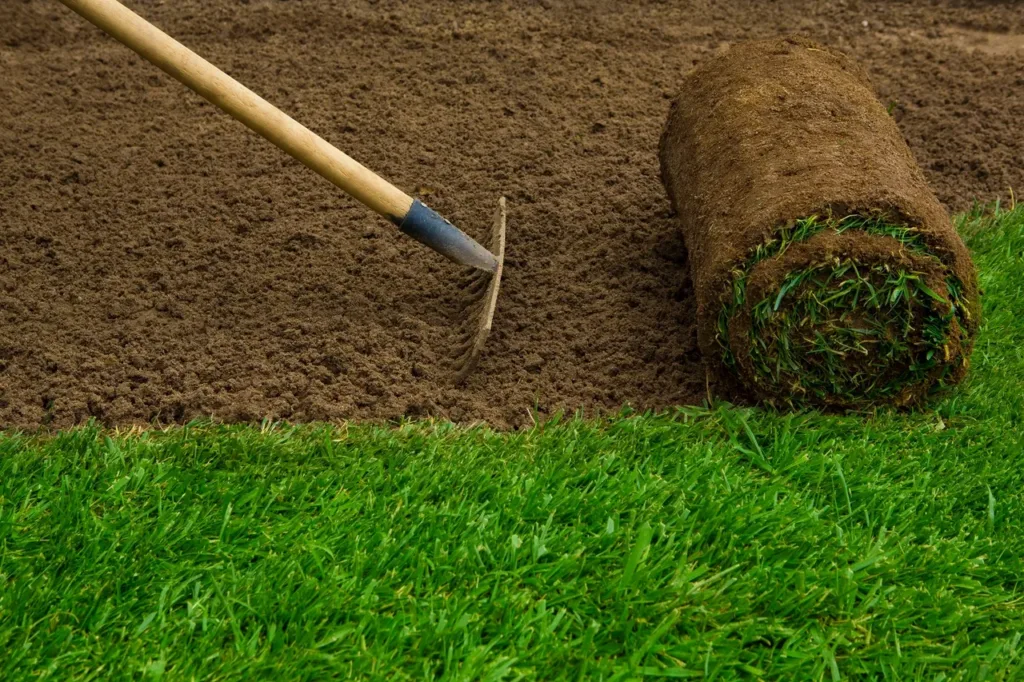Before any work is carried out you should first workout the size of the area you are looking to turf. This can be done simply by measuring the area and working out the m2, this can be simple for box shaped areas but more irregular areas require more in depth math.

Ordering turf
– Typically turf suppliers cut each roll of turf to 1 meter squared, this is why it is important to workout the m2 of the area.
– Choose a type of turf that suits your needs, whether that’s shade tolerant, sports turf or amenity turf. Then place the order.
– Turf needs to be laid as soon as possible after it has been delivered, ideally within 24 hours. Therefore order your turf for delivery on the same day, or one day prior to when you plan to lay the turf with preparations done in advance.
– If you can’t lay the turf immediately, keep the delivered turf in the shade particularly in hot weather and remove any film wrapping from the pallet. It’s also common practice to roll out the unused turf on appropriate ground, water and use when required.
Ground Preparation
– Proper ground preparation is essential for the establishment and future well-being of turf. Inadequately prepared ground will never produce the best results, so it is worth putting in a bit of time and effort at this stage.
– Remove existing turf by slicing beneath the turf with a spade or turf iron. For larger areas, consider using or hiring a turf cutter.
– If the area was previously a patio or driveway for example the hard standing surface will need to be removed and replaced with suitable soil.
– The soil then needs to be turned over thoroughly to a depth of 15cm using a spade or a powered cultivator.
– Clear the area of stones, weeds and other debris.
Raking
– Before laying turf the ground needs to be level and the surface should be firm but not compacted.
– Rake the area to produce a smooth, level surface.
– Lightly tread over the surface by foot to reveal any soft patches which can then be raked level. This process should continue until the whole area is firm and level.
– At this point additional soil may be required to gain the desired levels and contours.
Laying the Turf
– Now that the hard work has been done to prepare the ground, you are ready to lay your new turf. Use turfing boards or planks to work from and walk on, to avoid walking directly on the new lawn.
– Some turf suppliers may provide you with a pre-turfing fertiliser to help the turf get off to the best start. Sprinkle this onto the prepared ground, following the advice on the pack.
– Start by unrolling one strip of turf around the perimeter of the lawn. Avoid using small pieces at the edges as these can dry out and perish. Ensure that the underside of the new turf is in full contact with the soil below.
– Lay the next strip along the longest straight run and continue to work across the area, strip by strip producing a pattern similar to brickwork.
– Butt adjoining edges and ends against each other, but avoid stretching the turf.
– Overlapping pieces and ends of rows should be cut off neatly using a sharp knife, a half-moon lawn edger or an old wood saw.
– Once the turf is laid a light topdressing is recommended to prevent the joints from drying up during droughts.
Watering
– Newly laid turf needs watering well to root in and get off to a good start. The amount of watering will be dependent on the time of year that you lay the turf, with much more water needed during the summer months.
– Water new turf well immediately after laying using a hose pipe or sprinkler. Continue until the water has soaked through to the soil beneath the turf layer.
– For the following week to two weeks, water your turf well every evening (unless the rain does it for you!) The hotter, drier and windier the weather, the more water will be needed.
– Water immediately and profusely on any sign of the turf drying out for example gaps, lifting, browning or curling.
Mowing
– Depending on the time of year that you lay your turf the time of the first mow can vary, but the turf should be ready for its first mow around two-three weeks following laying.
– Resist the temptation to make the initial cut until turf has well rooted. This can be easily checked by lifting a corner to see if the roots are attached to the soil layer below.
– For the first mow, set the lawn mower to its highest setting to avoid stressing the grass. The aim is to nib the ends off the grass during the first cut. This helps promote root growth while keeping the plant under control.
– Mow regularly, each time removing no more than one-third of the grass height.
– When the lawn is fully established, the height of the cut can be reduced gradually to an optimum height of between 15mm and 35mm. Do this gradually to avoid scalping.
For more mowing tips, check out our YouTube channel click here
